- Home
- Military & Defense
- See inside the historic World War II-era aircraft carrier that was hit by 4 Japanese kamikazes and a torpedo and served in the Vietnam War
See inside the historic World War II-era aircraft carrier that was hit by 4 Japanese kamikazes and a torpedo and served in the Vietnam War
Launched in 1943 and decommissioned in 1974, the Intrepid now rests at Pier 86 in New York City. At 872 feet long, it's an imposing ship.

While it was in service, the Intrepid typically had 3,000 personnel on board. That pales in comparison to today's carriers which typically have double that.
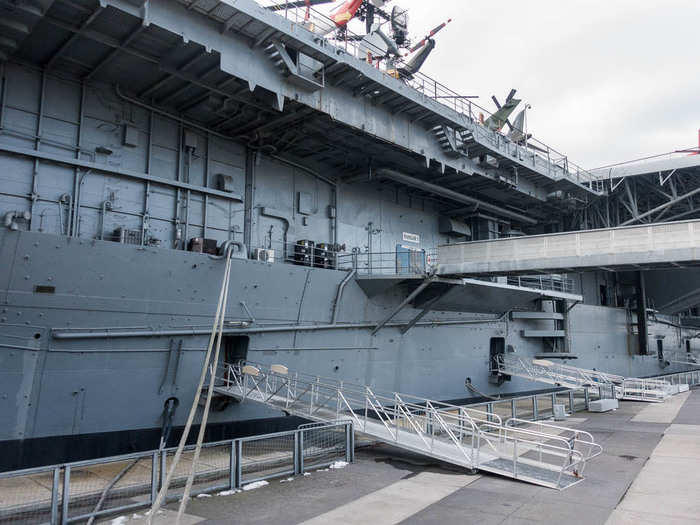
The man founder of the muse
You enter the ship through the hangar deck. The Intrepid Museum was established by real estate developers Zachary and Larry Fisher. Zachary had wanted to serve in World War II, but was unable due to an injury. He spent the rest of his life giving back to the military in various ways, Jessica Williams, Intrepid's curator of history, told Business Insider.
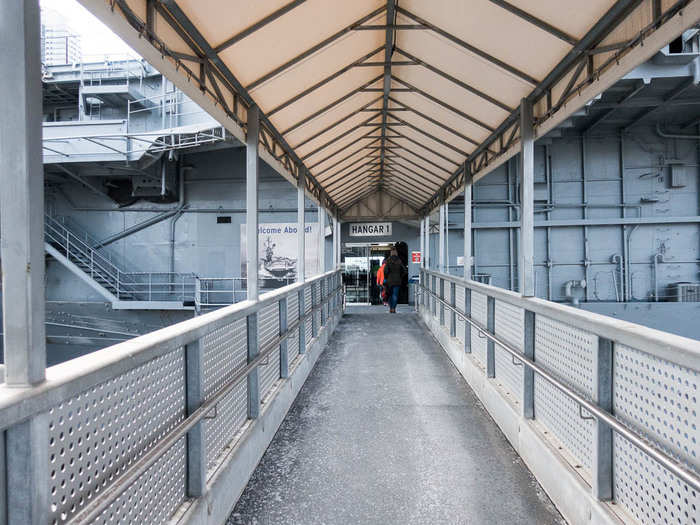
The Intrepid first entered combat in early 1944 in the Pacific Theater. It was involved in numerous battles until the end of the war. During World War II, it typically had around 90 planes on board.
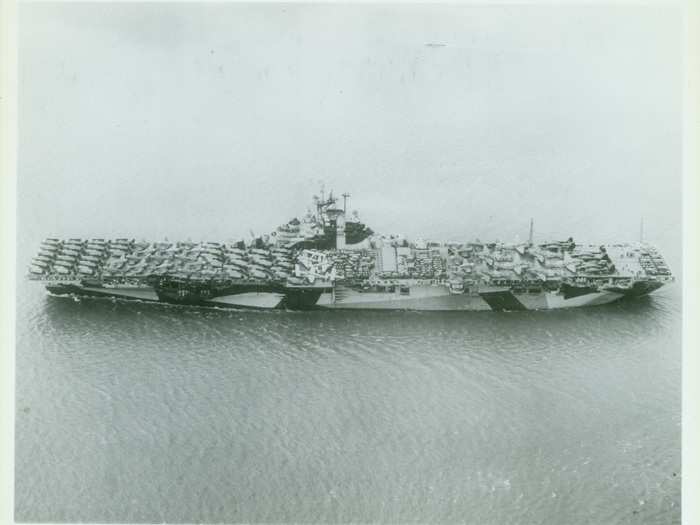
The hangar deck has been outfitted as the main exhibition space for the museum. It is filled with history, both of the ship and the Navy. This is the ship's original bell, which was used to mark the crew's "watches" or shifts.
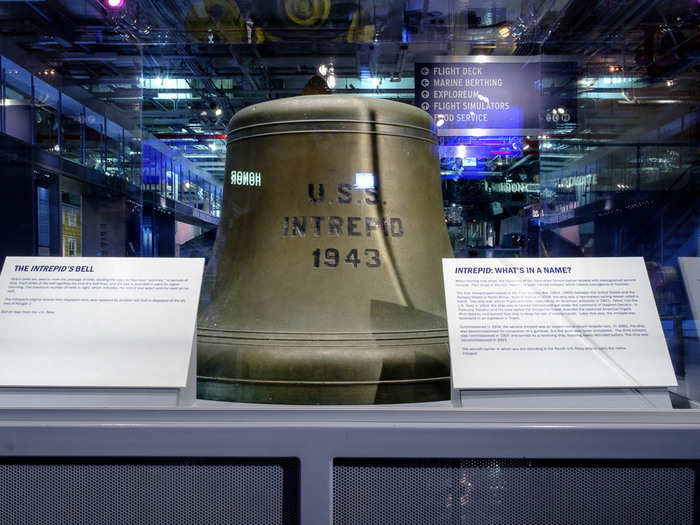
During World War II, the ship was struck on four separate occasions by kamikaze planes and once by a torpedo. Those strikes forced the ship to return to the US for repairs several times, earning it the nicknames "the Decrepit" and "the Dry I."

The Intrepid was built with a wooden flight deck because it allowed the ship to carry more planes and have better maneuverability. But the design decision didn't count on kamikazes. "They weren't expecting airplanes laden with gas crashing through," said Williams.
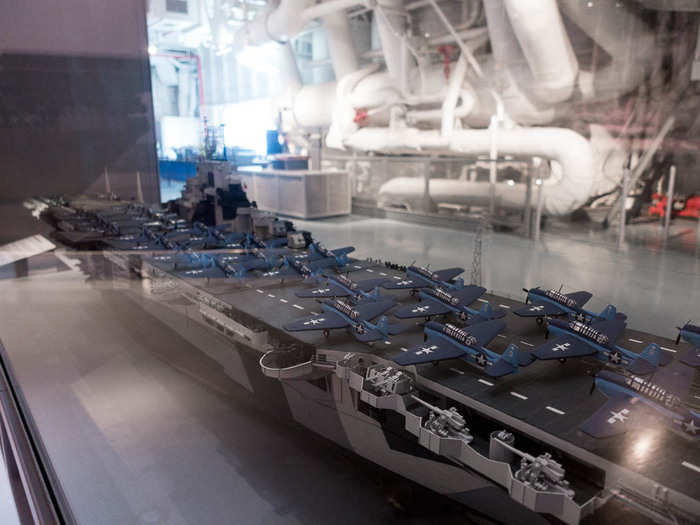
The Intrepid sustained 270 casualties while in service. All are commemorated on this memorial wall. The most deadly day in Intrepid history came on November 25, 1944, when two kamikaze aircraft struck the ship. 69 crew members were lost.
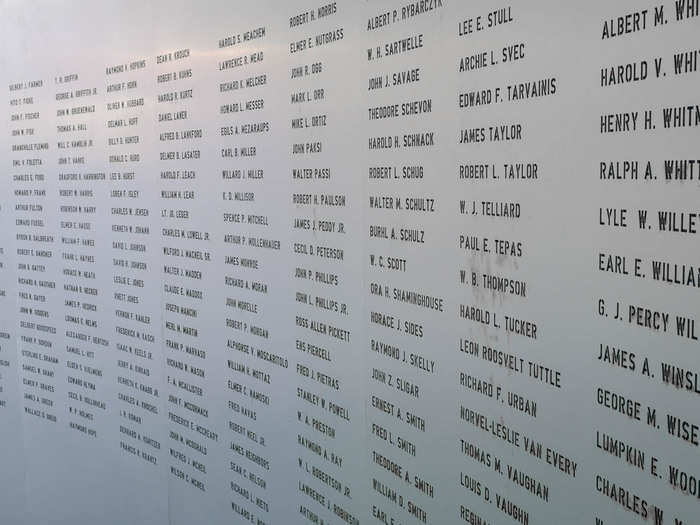
Source: Intrepid Museum
During World War II, crewmen helped planes land on deck by waving colored paddles. In the post-WWII jet age, they began using this device, nicknamed "the meatball," due to the ball of light on the mirror that would help them determine their landing path.

This is one of the Intrepid's four propellers. The Intrepid was capable of reaching a maximum speed of 32 knots, or about 37 miles per hour, similar to today's Nimitz class of carriers.
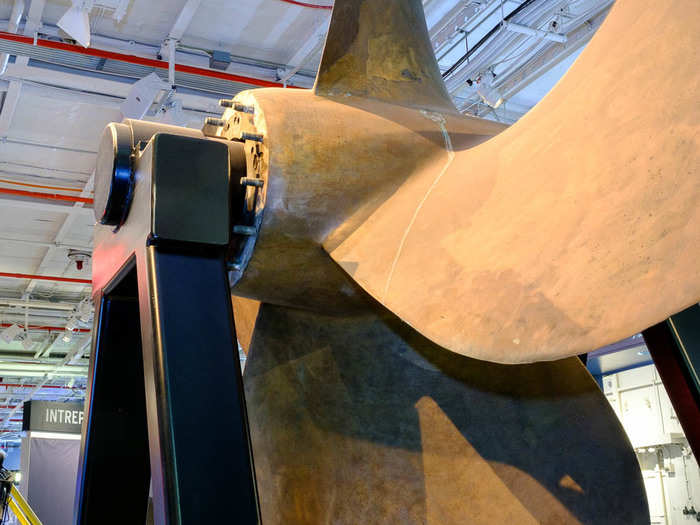
During wartime, the ship operated under "blackout" conditions at night. The crew would block all openings so no light leaked out. They used these "light locks" to move in and out of the ship. The door was covered with heavy black cloth.
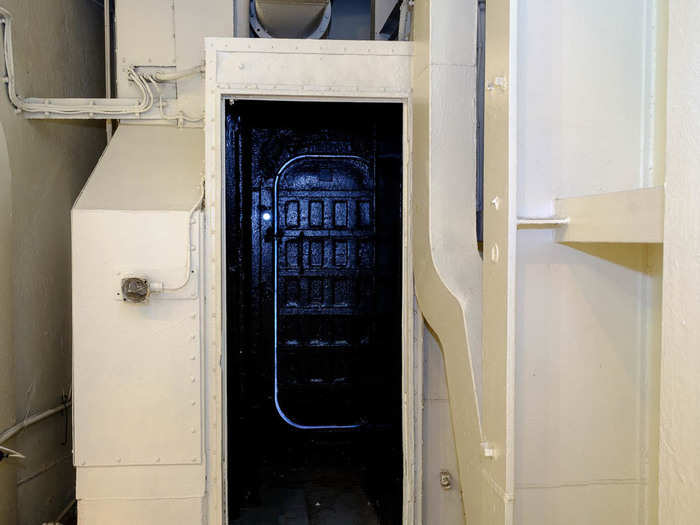
When planes weren't getting ready to take off, they were housed on the hangar deck, which was like a massive garage. Aircraft were fueled from one of eight stations like this one.
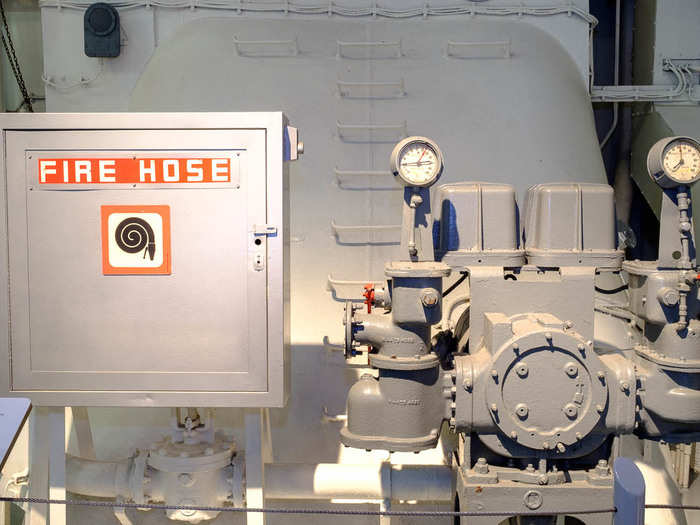
There are still plenty of aircraft hanging out on the hangar deck. The Grumman/Eastern Aircraft TBM-3E Avenger was used extensively during WWII. President George H.W. Bush flew the craft during the war.
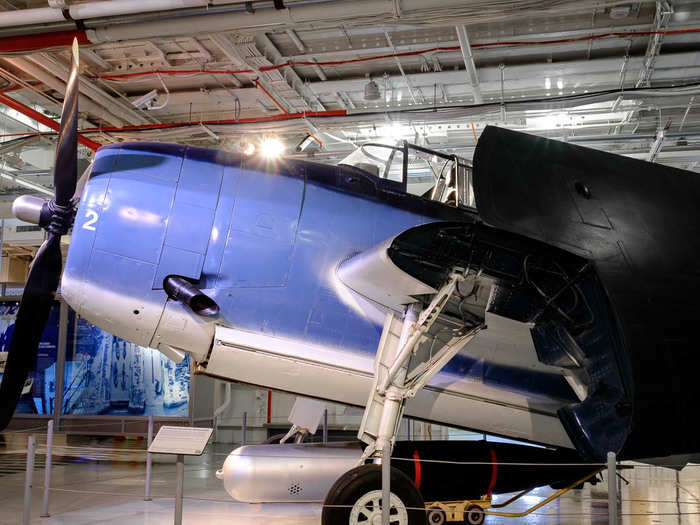
The Avenger aircraft was the first to use this Grumman ball turret, which can transverse 360 degrees in either direction and is powered electrically.
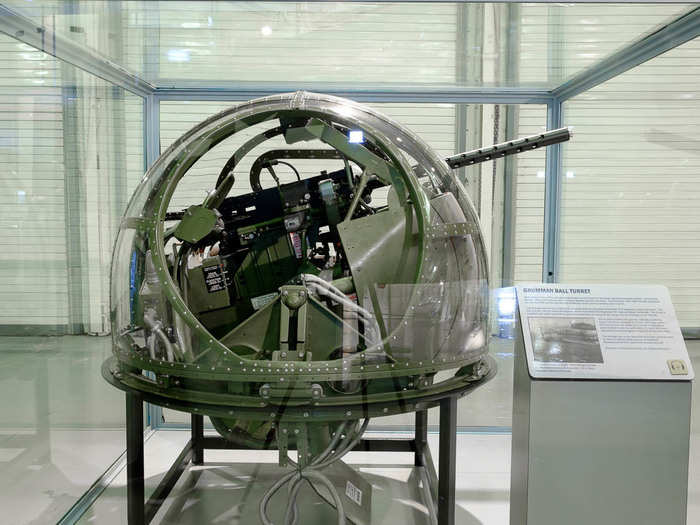
After World War II, the US moved to jets like the North American FJ-3 Fury. The Intrepid underwent significant modernizations in the 1950s to add steam catapults that could launch jets like the Fury.
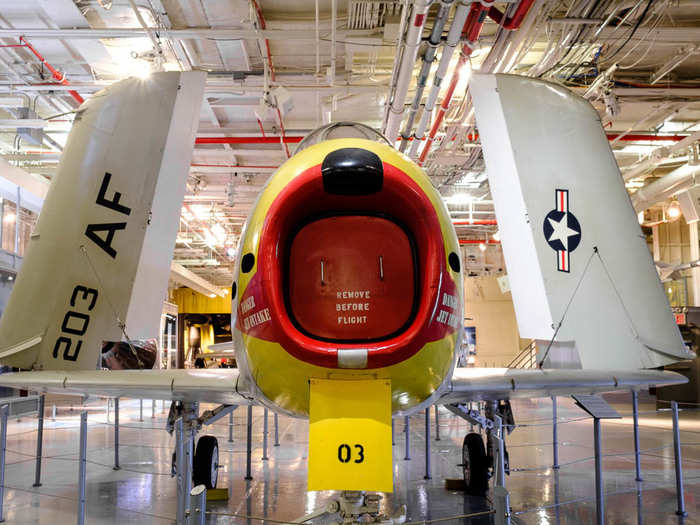
If you had to get out of a U.S. Navy fighter jet in a hurry, this Martin-Baker Mark V ejection seat was what you would be using in the '50s and '60s. To eject, the pilot pulled rings above his or her head.
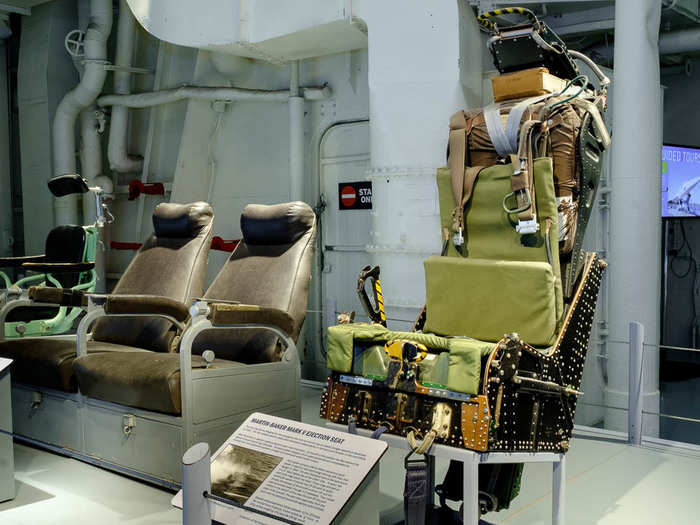
In the 1960s, the Intrepid became the lead recovery vessel for the Mercury Atlas-7 and Gemini 3 space missions. Intrepid crewmen felt immense pride to rescue the astronauts, according to Williams.
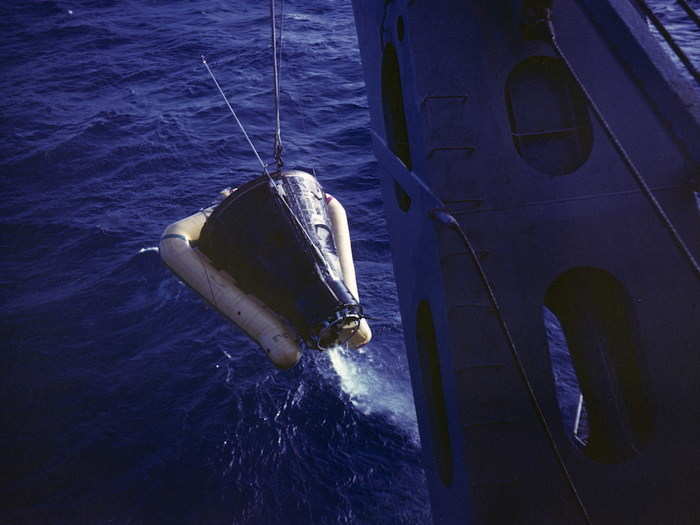
When the ship's helicopter returned with the astronauts, crewmen waited on the deck to watch. "There was this sense of it being a transformative moment," Williams said. This is a replica of the Mercury capsule.
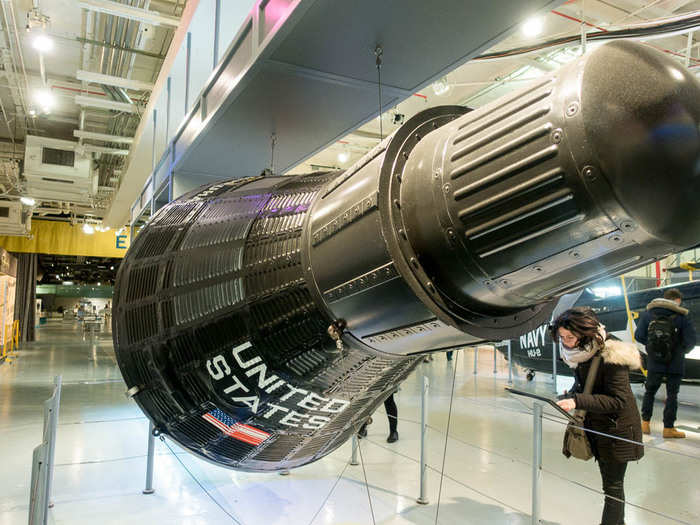
If all the planes have you amped up enough, the Intrepid has the G-Force Encounter simulator so you can try your hand at flying a jet. As a kid, this was my favorite part of the museum (of course).
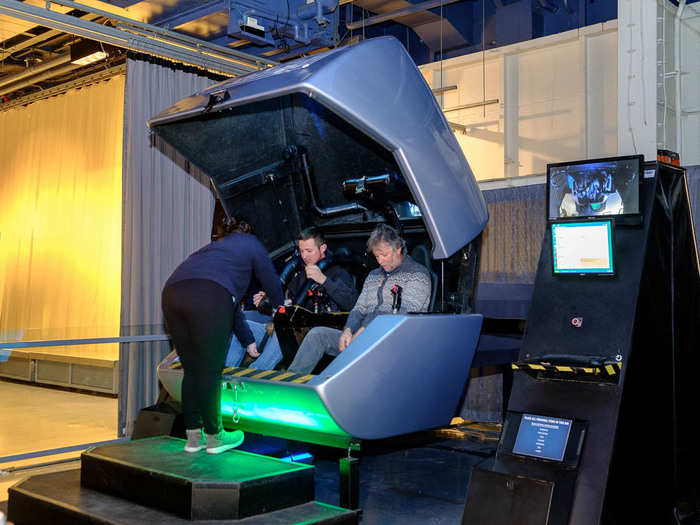
Crewmen used this massive portside elevator to bring planes from the hangar to the flight deck. Notice the wood flooring, which the entire flight deck was once made of. During their downtime, rewmen often used the elevator for sporting events.
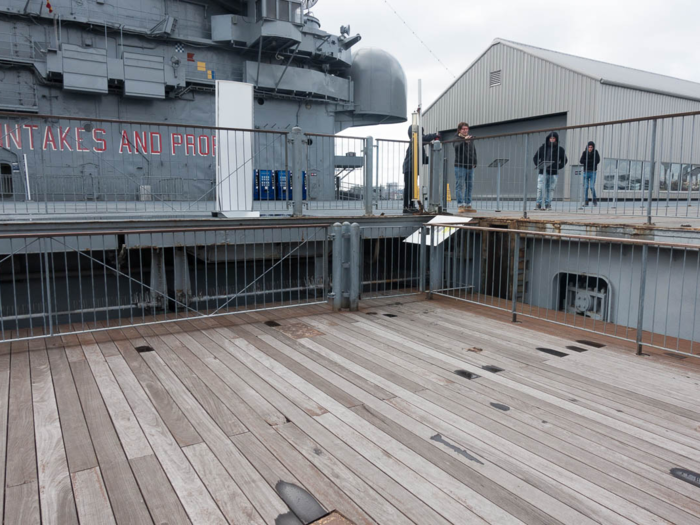
Next, head up into the island, which was the command center for the entire ship. It housed a variety of radar and communication instruments at the top. Below that is the bridge, where the captain controls the ship.
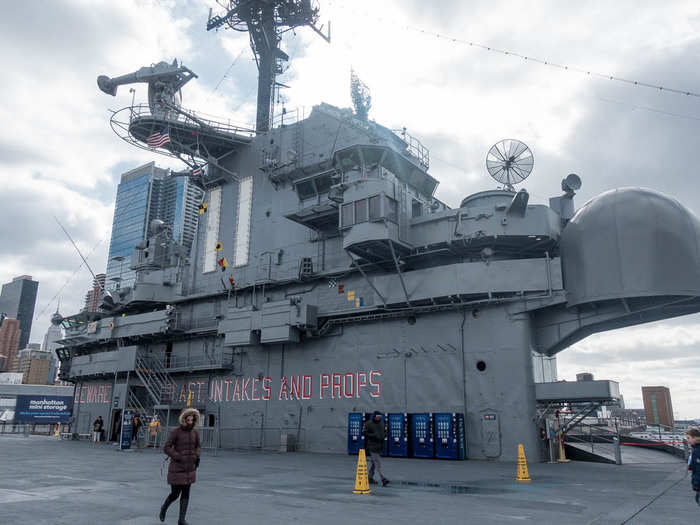
This is what the flight deck and the island looked like during World War II when the Intrepid was an "attack carrier." After the war, the ship was reclassified for anti-submarine warfare, meaning it tracked Soviet submarines.
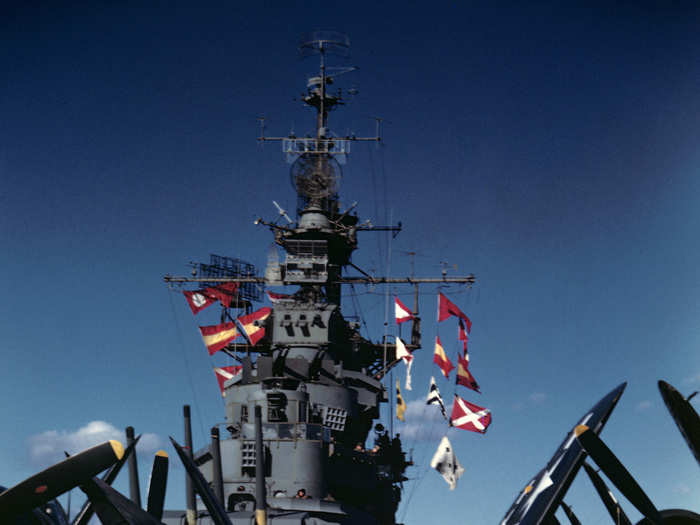
In the late 1960s, Intrepid became an attack carrier during the Vietnam War. But prior to that, it spent a lot of time trawling the Mediterranean for Soviet subs, according to Williams. "If I had to pick a time to serve on the Intrepid, I'd pick the 1950s and 1960s ... they spent a lot of time visiting ports and having a good time," she said.
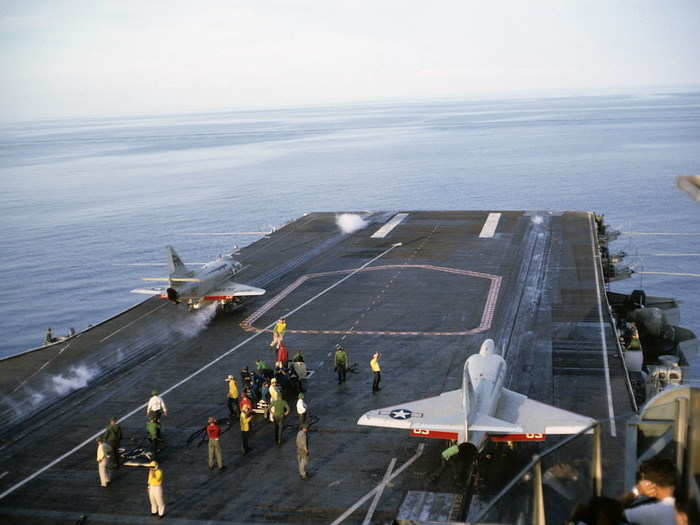
In addition to the captain's bridge, the Intrepid also had a flag bridge where the admiral and his command planned movements. The Intrepid rarely traveled alone and was often the flagship of its group.
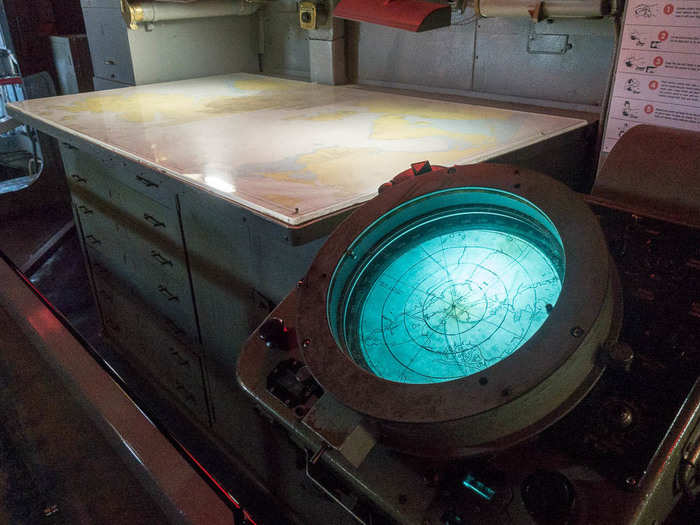
Source: Intrepid Museum
The flight deck today has an enormous collection of restored aircraft from all different eras and makes. The collection includes a AV-8C Harrier jet, a F-16A Fighting Falcon, and even the A-12 Blackbird spy plane.
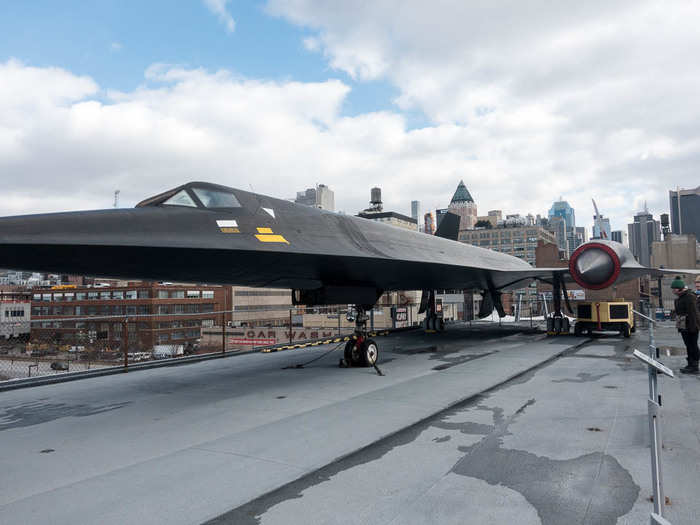
Recently, the museum added a pavilion housing the Enterprise space shuttle. The Enterprise was NASA's prototype for the space shuttle program. It performed atmospheric test flights, but had no engines or functional "heat shield."

Popular Right Now
Advertisement